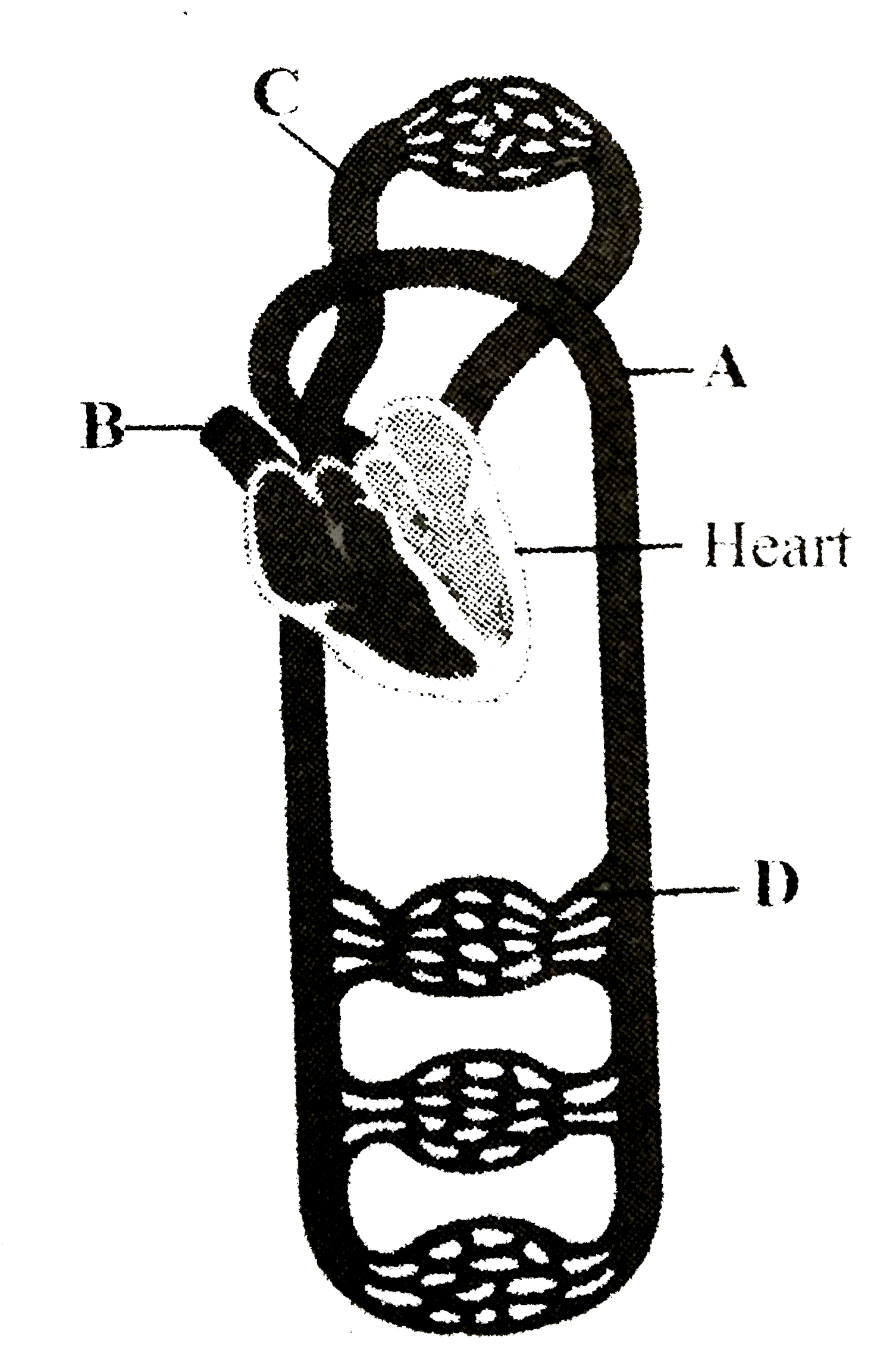Give differences between the following:
Pulmonary circulation and systemic circulation
To differentiate between pulmonary circulation and systemic circulation, we can follow these steps:
Step 1: Define Pulmonary Circulation
Pulmonary circulation is the part of the circulatory system that carries deoxygenated blood from the right side of the heart to the lungs. In the lungs, the blood releases carbon dioxide and picks up oxygen.
Step 2: Define Systemic Circulation
Systemic circulation is the part of the circulatory system that carries oxygenated blood from the left side of the heart to the rest of the body. This circulation delivers oxygen and nutrients to body tissues and returns deoxygenated blood back to the right side of the heart.
Step 3: Compare the Pathways
- Pulmonary Circulation Pathway: Right ventricle → Pulmonary arteries → Lungs → Pulmonary veins → Left atrium.
- Systemic Circulation Pathway: Left ventricle → Aorta → Body tissues → Veins → Right atrium.
Step 4: Identify the Type of Blood Carried
- Pulmonary Circulation: Carries deoxygenated blood to the lungs.
- Systemic Circulation: Carries oxygenated blood to the body.
Step 5: State the Purpose
- Pulmonary Circulation Purpose: To oxygenate blood and remove carbon dioxide.
- Systemic Circulation Purpose: To supply oxygen and nutrients to the body and collect waste products.
Summary of Differences
1. Pathway: Pulmonary circulation goes from the heart to the lungs and back; systemic circulation goes from the heart to the body and back.
2. Type of Blood: Pulmonary circulation carries deoxygenated blood; systemic circulation carries oxygenated blood.
3. Purpose: Pulmonary circulation is for gas exchange; systemic circulation is for delivering oxygen and nutrients.
Pulmonary circulation is the part of the circulatory system that carries deoxygenated blood from the right side of the heart to the lungs. In the lungs, the blood releases carbon dioxide and picks up oxygen.
Systemic circulation is the part of the circulatory system that carries oxygenated blood from the left side of the heart to the rest of the body. This circulation delivers oxygen and nutrients to body tissues and returns deoxygenated blood back to the right side of the heart.
- Pulmonary Circulation Pathway: Right ventricle → Pulmonary arteries → Lungs → Pulmonary veins → Left atrium.
- Systemic Circulation Pathway: Left ventricle → Aorta → Body tissues → Veins → Right atrium.
- Pulmonary Circulation: Carries deoxygenated blood to the lungs.
- Systemic Circulation: Carries oxygenated blood to the body.
- Pulmonary Circulation Purpose: To oxygenate blood and remove carbon dioxide.
- Systemic Circulation Purpose: To supply oxygen and nutrients to the body and collect waste products.
1. Pathway: Pulmonary circulation goes from the heart to the lungs and back; systemic circulation goes from the heart to the body and back.
2. Type of Blood: Pulmonary circulation carries deoxygenated blood; systemic circulation carries oxygenated blood.
3. Purpose: Pulmonary circulation is for gas exchange; systemic circulation is for delivering oxygen and nutrients.
Topper's Solved these Questions
- PRACTICE ASSIGNMENTBOOK - ICSECHAPTER - PRACTICE ASSIGNMENTEXERCISE - PRACTICE ASSIGNMENT 6 (Based on Chapter 6 - Circulatory System) ( Answer the following questions :)
4 Videos
- PRACTICE ASSIGNMENTBOOK - ICSECHAPTER - PRACTICE ASSIGNMENTEXERCISE - PRACTICE ASSIGNMENT 6 (Based on Chapter 6 - Circulatory System) (Fill in the blanks:)
6 Videos
- PRACTICE ASSIGNMENTBOOK - ICSECHAPTER - PRACTICE ASSIGNMENTEXERCISE - PRACTICE ASSIGNMENT 5 (Based on Chapter 5 - Respiratory System) (Fill-in the blanks : )
6 Videos
- HEALTH AND HYGIENE BOOK - ICSECHAPTER - HEALTH AND HYGIENE EXERCISE - Think and answer
3 Videos
- RESPIRATORY SYSTEM BOOK - ICSECHAPTER - RESPIRATORY SYSTEM EXERCISE - TEST YOURSELF (VII. Answer the following quesitons )
3 Videos
Similar Questions
Knowledge Check
Which of the following sequences is truly a systemic circulation pathway ?
ARight ventricle → Pulmonary aorta → Tissues → Pulmonary veins → Left auricleBRight auricle → Left ventricle → Aorta → Tissues → Veins → Right auricleCLeft auricle → Left ventricle → Pulmonary aorta → Tissues → Right auricleDLeft auricle → Left ventricle → Aorta → Areries → Tissues → Veins → Right atriumThe given figure is of circulatory system. Identify the labelled parts (A-D) from the list (i-vii).
(i) Pulmonary circulation
(ii) Systemic circulation
(iii) Superior vena cava
(iv) Inferior vena cava
(v) Aorta
(vi) Veins and venules
(vii) Arterioles and capillaries
 AA B C D(v) (iii) (i) (vii)BA B C D(vii) (iv) (i) (vi)CA B C D(v) (iii) (ii) (vii)DA B C D(vii) (v) (i) (vi)
AA B C D(v) (iii) (i) (vii)BA B C D(vii) (iv) (i) (vi)CA B C D(v) (iii) (ii) (vii)DA B C D(vii) (v) (i) (vi)
Differentiate between Pulmonary and Systemic circulation
View SolutionDescribe the importance of pulmonary circulation.
View Solutionwhat is the difference between cutaneous and pulmonary respiration ?
View SolutionWrite a short note on pulmonary circulation.
View SolutionA correct systemic circulation pathway is
View SolutionBlood circulation in insects :
View Solution
